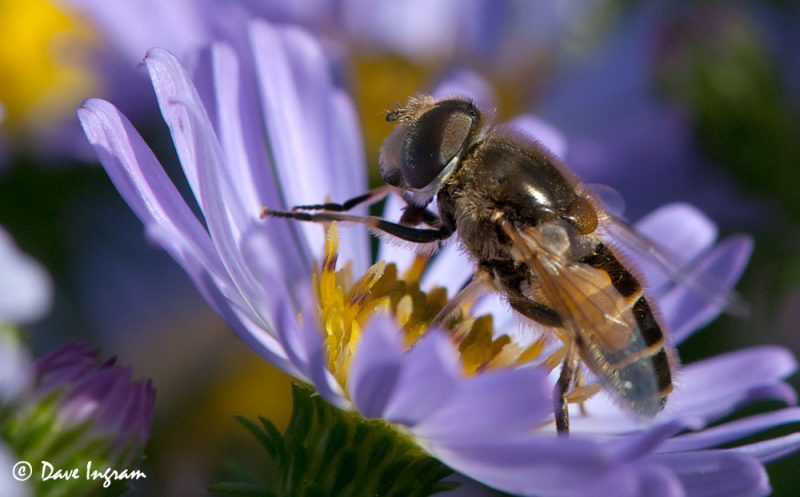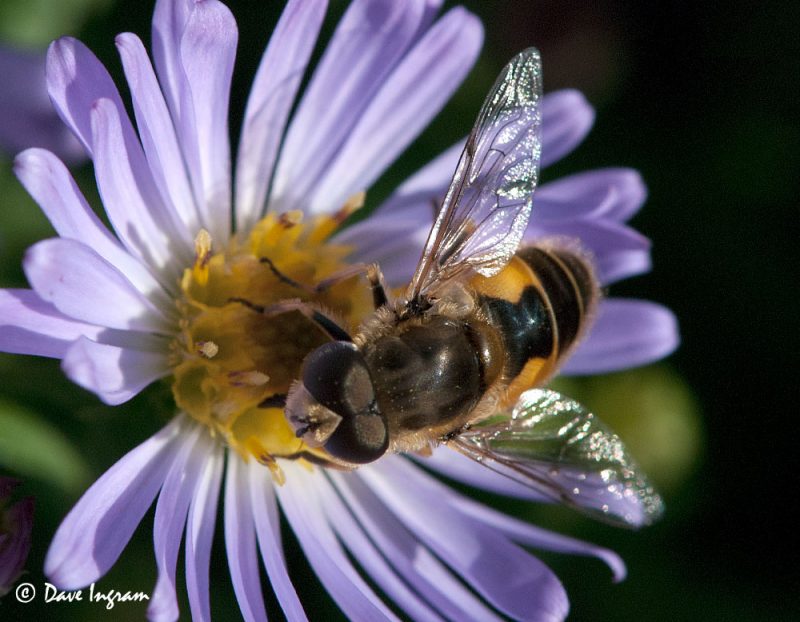Time flies when you’re having fun, and one of the things that makes time fly is watching flies.
I had a spare hour this week, and on a sunny afternoon decided to check out a purple aster on our back border that was in full fall bloom. This late in the season, anything that is producing nectar and pollen is an oasis for insects of all kinds.
At first glance I thought that the insects that were visiting the flowers were bees but a closer look revealed that they were actually flies, cleverly “dressed” to appear as something they were not. There were a few small wasps in the mix, but the majority of the insects were drone or hover flies.

A quick way to sort wasps and bees from flies is to count the wings (probably not something you’d do if one landed on you) and look closely at the antennae. Flies (Diptera) have two wings while wasps and bees (Hymenoptera) have four wings. The length of the antennae is a clue as well – flies will have much shorter and less flexible antennae.
It was highly entertaining to watch these busy insects on the aster. They were constantly in motion, moving from flower to flower. Trying to sort out subtle differences between different species was challenging and my identification of these two somewhat similar looking species is very tentative.
The first is possibly Eristalis arbustorum, a common drone fly introduced from Europe. There are several similar species and field marks to look for to separate it out are an all white face (others in this genus like the common (and very similar) E. tenax will have a black line down the center of the face) and leg colour – the mid-part of the leg is yellow. The larval part of this fly’s life cycle is usually spent in stagnant water where it is called a “rat-tailed” maggot. The tail is actually a snorkel that it uses for breathing.

I’m less sure of this second hover fly, but I think that it may be Helophilus fasciatus. This fly was noticeably different from the others on the aster and I only found one of them. Note the striped thorax and the extra yellow stripes on the abodomen. Like the drone Eristalis, this fly also spends the larval part of its lifecycle in water as a “rat-tailed” maggot.

I’m hoping that the weather will clear again this week and I’ll get a chance to revisit these friendly flies – they’re extremely entertaining to watch and you don’t have to worry about getting stung! It’s amazing the amount of biodiversity you can encourage in your backyard with some thoughtful planting.